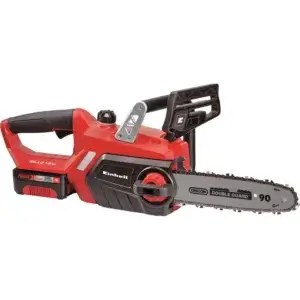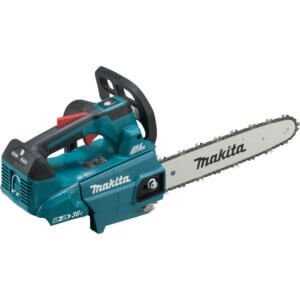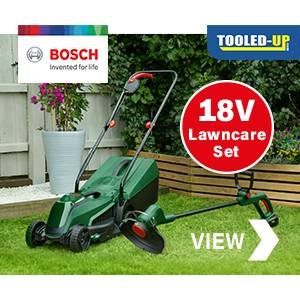Are you worried that your chainsaw won’t work when you need it next spring? Proper winter storage of your equipment is vital to ensure it stays in top shape. This article will guide you through essential steps, including how to clean your chainsaw, manage the fuel tank, and protect its moving parts. By following these tips, you can avoid costly repairs and ensure a hassle-free start-up when the warmer months arrive. Don’t let improper storage damage your power tool; keep reading to learn how to effectively prepare your chainsaw for winter.
Key Takeaways
- Proper winter storage prevents damage to chainsaw components and ensures longevity
- Cleaning the chainsaw before storage protects it from rust and enhances performance
- Effective fuel management helps avoid issues caused by stale fuel during the cutting season
- Lubricating moving parts is essential for optimal operation when using the chainsaw again
- Regular inspections and test runs prepare the chainsaw for a smooth start in spring
Why Proper Winter Storage of Your Chainsaw Is Important
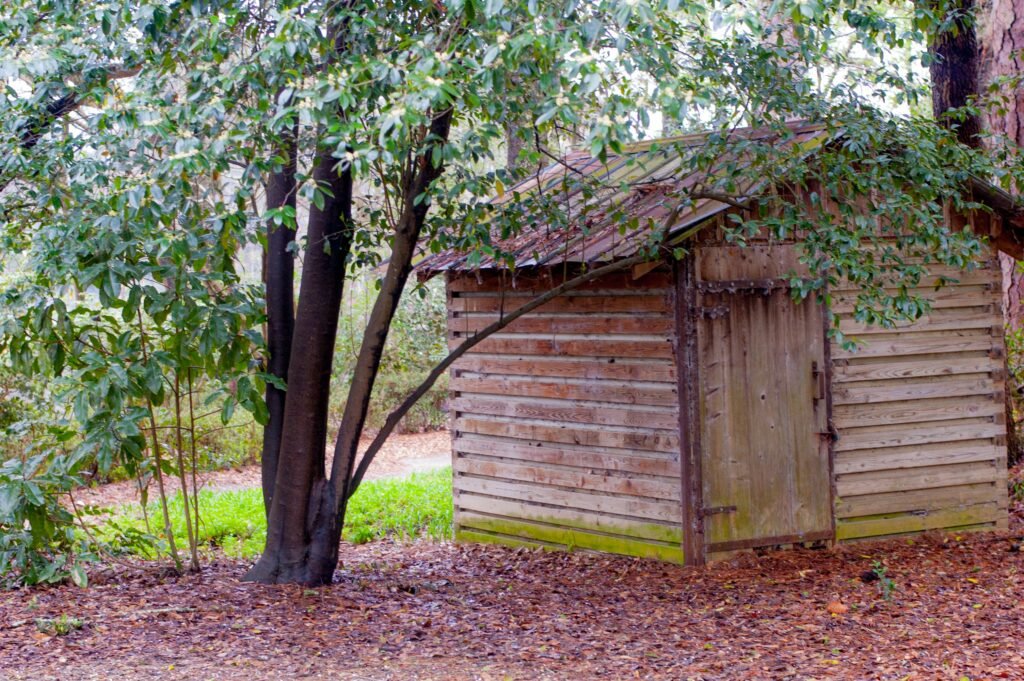
Proper winter storage of a chainsaw is crucial for maintaining its performance and longevity. Cold temperatures can cause damage to the engine components, while improper fuel management can lead to ethanol-related degradation. Additionally, ensuring safety during the off-season prevents accidents caused by dust and pressure buildup. Focusing on these areas ensures the chainsaw remains in excellent condition for the next use.
Avoiding Damage From Cold Temperatures
Cold temperatures can severely damage chainsaw equipment if not stored properly. Components like the cylinder and spark plug can contract, leading to potential leaks or even cracking. Maintaining a stable environment where the chainsaw is stored helps prevent such issues, ensuring the equipment stays intact for future use.
When chainsaws are exposed to cold, the fuel can become gelled, preventing it from igniting properly. This can create performance issues when trying to start the chainsaw in warmer conditions. Storing the chainsaw indoors at a moderate temperature reduces this risk and keeps the fuel system functioning optimally when the weather warms up.
An effective way to prepare chainsaws for winter storage is to remove the spark plug and add a few drops of oil into the cylinder. This process lubricates the internal parts and protects against moisture that can cause rust. Taking these simple steps helps ensure that the chainsaw remains ready for use when the cutting season begins again.
Preventing Fuel Degradation
Preventing fuel degradation is essential when preparing a chainsaw for winter storage. Leftover fuel in the tank can become stale, which leads to issues during future use. To ensure the chainsaw operates smoothly when the cutting season resumes, it is advisable to either use fuel stabiliser or fully empty the tank before storing the equipment.
One common concern among gardeners and woodworkers is how moisture can affect the fuel quality. If a chainsaw sits idle for an extended period with fuel in the tank, it can absorb moisture, causing a phase separation where the ethanol in the fuel separates from the petrol. This process can result in the formation of a sludge that clogs fuel lines, especially after pruning or cutting wood, leading to performance issues when starting the chainsaw next time.
Another practical tip is to add a small amount of lubricant to the fuel system before storing the chainsaw. This helps protect the internal components from rust and corrosion, ensuring that the chainsaw functions properly. By prioritising fuel management during storage, individuals can avoid common pitfalls that cost time and lead to frustration when it’s time to tackle yard work again.
Ensuring Safety During the Off-Season
Ensuring safety during the off-season is vital for anyone storing a chainsaw in a shed or garage. The presence of snow and ice can increase the risk of slipping and accidents when accessing the equipment. It is best to keep the storage area clean and free of debris to minimise hazards when retrieving the chainsaw in the spring.
Proper storage also involves managing fuel safely. Chainsaws often contain petrol, which can be highly flammable if not handled correctly. By emptying any leftover petrol and following safety guidelines when storing fuel, individuals can prevent potential fire hazards that could arise from improper storage practices.
Regular checks on the chainsaw and its surroundings can further enhance safety during winter. Ensuring that metal components of the chainsaw are free of moisture helps prevent rust and deterioration. By being proactive, gardeners and woodworkers can take the necessary steps to safeguard their equipment, leading to a safer and more efficient experience when the work season resumes.
Thoroughly Clean Your Chainsaw Before Storing
To prepare your chainsaw for winter storage effectively, it is essential to remove sawdust and debris from the chain and bar. Cleaning the air filter and cooling fins will help prevent dirt build-up that can lead to engine leaks or overheating. Lastly, a thorough wipe down of the exterior components ensures no residue remains, keeping the equipment in top condition for the next cutting season.
Remove Sawdust and Debris From the Chain and Bar
Cleaning the chain and bar of a chainsaw is essential before storage, as it helps prevent the accumulation of sawdust and debris. These materials can cause grime build-up, which may lead to issues with the carburetor or other machine components when the chainsaw is put back into use. By taking the time to wipe down the chain and bar, users can ensure a smoother operation and reduce the risk of performance hiccups.
Moisture can exacerbate the effects of residual debris, leading to rust and corrosion. When moisture combines with dirt on the chain and bar, it may create a sludge that clogs the pump and affects the overall functionality of the chainsaw. Thorough cleaning not only extends the life of the equipment but also safeguards against problems that can arise during the cutting season.
After removing sawdust and debris, it is beneficial to lubricate the chain to keep it in optimal condition. This extra step helps protect against moisture and rust, while ensuring the chain operates smoothly when needed. By following these practical tips, users can streamline maintenance efforts and enhance their chainsaw’s longevity, making it ready for efficient use in the future.
Clean the Air Filter and Cooling Fins
Cleaning the air filter and cooling fins of a chainsaw is crucial for maintaining engine efficiency. A clogged air filter can restrict airflow, making it harder for the motor to perform at its best. Over time, dirt and debris can accumulate, affecting the chainsaw’s power and potentially causing overheating during use.
To clean the air filter, remove it from the chainsaw and tap it gently to dislodge any large particles. A soft brush can also be used to remove finer dust, ensuring that the filter allows for optimum airflow. Inspecting the filter regularly helps avoid performance issues and extends the lifespan of the chainsaw.
Additionally, while preparing for winter storage, checking the cooling fins for dirt build-up is essential. Cleaning these fins improves airflow and prevents overheating by allowing proper wind circulation around the engine. Ensuring that both the air filter and cooling fins are clean will help the chainsaw run smoothly and efficiently when the cutting season begins again.
Wipe Down the Exterior Components
Before winter sets in, taking the time to wipe down the exterior components of a chainsaw is essential for effective winterization. Cleaning the surface removes dirt and debris that can attract moisture, which contributes to corrosion during colder months. A simple cloth or plastic scraper can efficiently rid the chainsaw of any residual grime, protecting the equipment’s exterior integrity.
Using a compressor to blow away dust and particles from intricate areas can enhance the cleaning process. This method helps ensure that no contaminants remain that might lead to rust or damage under a tarpaulin cover. Keeping the chainsaw clean not only prevents corrosion but also makes it easier to use when spring arrives.
Properly wiping down the exterior components allows for better inspection of the equipment’s condition. If any scratches or damage are present, treating these areas with protective coating helps to prevent future corrosion issues. By taking these straightforward steps, gardeners can prolong the life of their chainsaw and ensure it is ready for the next cutting season.
Proper Fuel Management for Storage
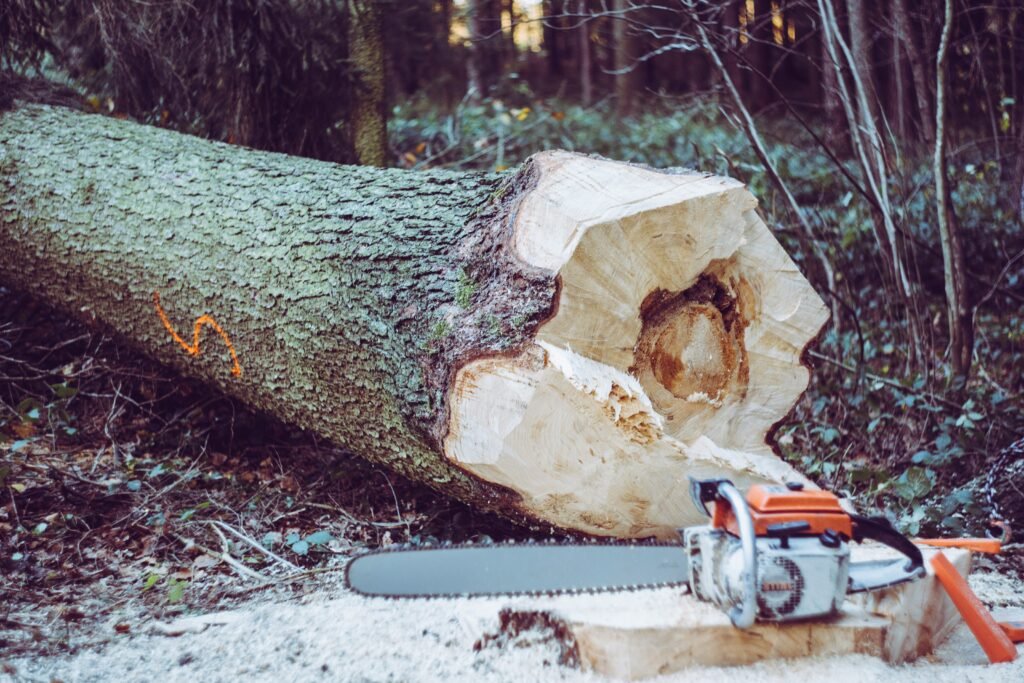
Effective fuel management is essential during winter storage to ensure the chainsaw remains operational come spring. It is crucial to drain the fuel tank completely, add a fuel stabiliser if necessary, and run the engine to clear any remaining fuel. These steps will enhance the longevity of engine components and prevent issues related to stale fuel.
Drain the Fuel Tank Completely
Draining the fuel tank completely is a vital step when preparing a chainsaw for winter storage. Leftover fuel can become stale, leading to starting issues and potential damage to the engine during the next use. For optimal performance, it is advisable to empty the entire tank to prevent such problems.
The process of draining the fuel can be straightforward. First, run the chainsaw until it uses the remaining fuel in the tank. This ensures that the fuel system is clear before winter sets in. If there is still fuel left, using a siphon pump can efficiently remove it without spilling or creating a mess.
After draining the tank, consider running the chainsaw briefly to clear any residual fuel from the carburettor. This simple step aids in avoiding clogged lines and keeps the engine in working order. By addressing fuel management, individuals can mitigate common issues and extend the life of their chainsaw equipment:
- Ensure complete drainage of the fuel tank.
- Run the chainsaw until it stalls to clear the system.
- Utilise a siphon pump if necessary for a thorough drain.
- Run the engine briefly after draining for optimal maintenance.
Add Fuel Stabiliser if Necessary
Adding fuel stabiliser is an effective way to prolong the life of the fuel in a chainsaw during winter storage. Fuel stabilisers prevent the degradation of petrol, which can occur over time, especially when it is stored in a tank during cold months. This additive helps maintain the fuel’s integrity, ensuring that it remains usable when the chainsaw is needed again in the spring.
To use a fuel stabiliser properly, gardeners should follow the manufacturer’s instructions regarding dosage. Generally, a small amount is sufficient to treat a full tank of fuel. After adding the stabiliser, running the chainsaw for a few minutes ensures that the mixture circulates through the fuel system, preventing any unwanted build-up and guaranteeing smooth operation later on.
When preparing the chainsaw for winter, applying a fuel stabiliser can save time and frustration during the first use of the season. Stale fuel can lead to starting issues and engine problems, which can derail planned projects. By incorporating this simple step into winter storage routines, users can protect their investment in a chainsaw and ensure it is ready for efficient use when the weather warms up.
Run the Engine to Clear Remaining Fuel
Running the engine of the chainsaw before winter storage is a crucial step in fuel management. This action not only helps clear any remaining fuel from the system but also ensures that the carburettor is free from residue that could lead to performance issues. When the engine runs until it stalls, it effectively eliminates stale fuel, preventing potential blockage during the cutting season.
For those looking to maintain optimal chainsaw performance, allowing the engine to run for a few minutes after draining the tank can be beneficial. This practice circulates any last bits of fuel through the system, which aids in clearing the lines and prevents clogging. Taking this simple precaution extends the life of the chainsaw and promotes a hassle-free experience when it’s time to use the equipment again.
Incorporating this step into the winter storage routine can save time and frustration when the cutting season arrives. Clogged fuel lines resulting from leftover fuel can create starting difficulties, delaying essential outdoor work. By proactively running the engine to clear remaining fuel, users can ensure their chainsaw is ready for immediate use when spring unfolds.
Lubricate and Protect Moving Parts

Applying adequate lubrication to moving parts of a chainsaw is essential for ensuring optimal performance during storage. This includes generously applying bar and chain oil, lubricating the clutch and bearings, and protecting metal components from corrosion. Following these practices not only maintains the efficiency of the chainsaw but also extends its lifespan for future use.
Apply Bar and Chain Oil Generously
Applying bar and chain oil generously is a critical step in winter chainsaw storage. This oil ensures the smooth operation of the chain and bar during use by providing necessary lubrication. Without sufficient lubrication, the chain can wear prematurely, leading to inefficient cutting and potential damage to the equipment.
To effectively apply bar and chain oil, users should focus on saturating both the chain and bar before storing the chainsaw. A well-lubricated chain not only prevents rust but also reduces friction, which can help the chainsaw perform better when it is put back into use. Regularly checking oil levels and replenishing as needed will keep the equipment in top condition.
Gardeners should consider the type of bar and chain oil used, as some oils offer better performance than others. Opting for high-quality oils designed specifically for chainsaws enhances protection, especially during colder months. By ensuring appropriate lubrication, chainsaws can maintain their efficiency and longevity, resulting in a smooth start when the cutting season resumes:
| Step | Action | Benefits |
|---|---|---|
| 1 | Apply oil to the chain. | Reduces wear and tear. |
| 2 | Lubricate the bar thoroughly. | Prevents rust and improves performance. |
| 3 | Use high-quality bar and chain oil. | Enhances protection during storage. |
Lubricate the Clutch and Bearings
Lubricating the clutch and bearings of a chainsaw before winter storage is essential to ensure smooth operation in the next cutting season. Proper lubrication prevents friction between moving parts, which can lead to wear and tear over time. By using high-quality lubricants, individuals can protect these components from corrosion and maintain the chainsaw’s efficiency.
To effectively lubricate the clutch and bearings, it is important to follow the manufacturer’s recommendations regarding suitable products. Applying the right amount of lubricant keeps these moving parts functioning optimally, providing the necessary protection against moisture and dirt accumulation during the off-season. Regular maintenance not only extends the life of the equipment but also enhances performance when the work season begins again.
In addition to lubrication, checking the condition of the clutch and bearings during winter storage is a wise practice. If any signs of wear or damage are present, addressing these concerns before spring can save time and money in repairs. This proactive approach ensures that the chainsaw is ready for immediate use, allowing gardeners and woodworkers to efficiently tackle their projects when the weather warms up.
Protect Metal Parts From Corrosion
Protecting metal parts from corrosion is critical for the longevity and efficiency of a chainsaw. During winter storage, moisture and cold temperatures can lead to rust formation on unprotected metal surfaces. Applying a rust inhibitor or light oil to all exposed metal parts can create a barrier against moisture, significantly reducing the risk of corrosion.
Gardeners should pay particular attention to the chainsaw’s components, such as the chain, bar, and any bolts. Regularly examining these areas for signs of rust allows users to take proactive measures to prevent further deterioration. For example, treating any signs of rust immediately and reapplying protection can preserve the equipment’s integrity over time.
To maintain optimal protection, storing the chainsaw in a dry environment is also essential. Avoiding humid areas or using a dehumidifier can help keep moisture levels down. By focusing on these steps, individuals can ensure their chainsaw remains operational when needed and extends the overall lifespan of the equipment:
- Apply a rust inhibitor or light oil to exposed metal parts.
- Inspect chainsaw components regularly for signs of rust.
- Store the chainsaw in a dry, moisture-free environment.
Choose the Right Storage Environment

Choosing the right storage environment is crucial for protecting a chainsaw during winter. Storing the chainsaw in a dry and cool location helps prevent moisture-related damage. Keeping it away from direct sunlight and damp areas further safeguards the equipment. Additionally, securely fastening the chainsaw can avoid accidents and ensure readiness for use in the next cutting season.
Store in a Dry and Cool Location
Storing a chainsaw in a dry and cool location is crucial for preventing moisture-related damage during winter. Humidity and dampness can cause rust and corrosion, which may compromise the integrity of the metal components. A climate-controlled environment can mitigate these risks, ensuring that the chainsaw remains operational for the next cutting season.
Gardeners and woodworkers should identify a suitable storage spot, such as a garage, basement, or shed, that maintains a stable temperature. Avoiding areas exposed to direct sunlight or extreme cold can further protect the chainsaw from temperature fluctuations that might lead to component warping. Maintaining a consistent environment helps prolong the life of the equipment significantly.
Additionally, keeping the chainsaw elevated off the ground on a shelf or rack can reduce exposure to moisture that may collect on surfaces. By ensuring the chainsaw is properly stored and safeguarded from environmental factors, users can prevent common issues that arise from improper storage practices. Follow these storage tips for optimal protection:
- Choose a dry and cool location away from direct sunlight.
- Avoid damp areas to minimise moisture exposure.
- Store the chainsaw on a shelf or rack to prevent moisture collection.
Keep Away From Direct Sunlight and Moisture
Keeping a chainsaw away from direct sunlight is essential for its preservation during winter storage. Sunlight can cause temperature fluctuations that may weaken the chainsaw’s components, leading to potential warping or damage. Choosing a shaded area for storage helps maintain a stable environment, which is vital for preserving the chainsaw’s integrity.
Moisture is another enemy of chainsaw storage, as it can lead to rust and corrosion on metal parts. A damp environment can also compromise fuel quality, making it harder to start the chainsaw when needed. To avoid these problems, storing the chainsaw in a cool, dry place is crucial for ensuring its longevity and performance.
By following simple guidelines for proper chainsaw storage, individuals can significantly reduce the likelihood of damage caused by sunlight and moisture. Keeping the equipment in an ideal environment not only extends its lifespan but also saves time and frustration when it is time to use the chainsaw again:
- Store the chainsaw in a shaded, cool location.
- Ensure the storage area has low humidity levels.
- Avoid direct sunlight exposure to prevent temperature fluctuations.
Secure the Chainsaw to Prevent Accidents
Securing the chainsaw properly is essential for preventing accidents during winter storage. When left unmonitored, tools can shift or fall, posing risks of injury to anyone accessing the storage area. It’s advisable to use brackets or wall mounts specifically designed for chainsaw storage to keep the equipment secure and organised.
Another practical measure is to place the chainsaw in a designated storage container or cabinet that can be locked. This not only secures the chainsaw but also protects it from dust and moisture, which can affect its performance. Ensuring that the storage area is free of clutter also minimizes the chance of accidental contact with the equipment.
Moreover, educating family members about proper storage practices plays a crucial role in safety. Clearly marking the storage location and providing guidelines on access can prevent unintended mishaps. Properly securing the chainsaw and communicating safety protocols leads to a safer environment while extending the lifespan of the equipment:
| Storage Tip | Action | Benefits |
|---|---|---|
| Use Brackets or Wall Mounts | Install brackets to hold the chainsaw securely. | Prevents movement and reduces accident risks. |
| Lockable Storage Container | Store the chainsaw in a cabinet that can be locked. | Protects from dust, moisture, and unauthorised access. |
| Clear Clutter | Keep the storage area tidy and organised. | Minimises the chances of accidental contact. |
Prepare for Spring Start-Up
Prior to the first use of a chainsaw in spring, essential steps should be taken to ensure optimal performance. Inspecting the chainsaw for any potential issues helps identify wear or damage. Replacing stale fuel and oil with fresh alternatives prepares the equipment for work. Finally, conducting a test run confirms that everything functions correctly before engaging in any cutting tasks.
Inspect the Chainsaw for Any Issues
Inspecting the chainsaw for any issues before spring use is crucial to ensure optimal performance. Gardeners should start by checking the condition of the cutting chain, as any signs of dullness or damage can affect cutting efficiency. A well-maintained chain not only enhances productivity but also reduces the risk of accidents during operation.
Next, assessing the engine components, such as the spark plug and air filter, is vital. A worn spark plug can hinder starting, while a clogged air filter can decrease airflow, leading to engine overheating. Replacing or cleaning these parts will help maintain the chainsaw’s reliability, ultimately saving time and effort when the cutting season begins.
Lastly, a thorough visual inspection of the entire equipment is essential for identifying rust or corrosion that may have developed during the winter months. Ensuring that all screws and bolts are tight can prevent operational failures. By taking these steps, gardeners will be better prepared for smooth and safe chainsaw operation as they head into the spring season.
Refill With Fresh Fuel and Oil
Before starting the chainsaw in spring, it is essential to refill it with fresh fuel and oil. Stale fuel can lead to performance issues, making it difficult to start the engine. By using fresh fuel, operators can ensure optimal combustion, which directly enhances the reliability of the chainsaw.
In addition to fuel, using high-quality bar and chain oil is crucial for smooth operation. This oil not only lubricates the chain but also protects it from wear and tear. Ensuring that the oil is fresh and at the correct level contributes to better cutting efficiency and prolongs the life of the chainsaw.
It is also advisable to mix fuel and oil according to the manufacturer’s specifications. This step is important for preventing engine damage and ensuring that the chainsaw operates at its best. Keeping accurate records of fuel types and mixtures can help users stay organised and prevent future issues:
| Action | Details | Benefits |
|---|---|---|
| Refill with fresh fuel | Use high-quality fuel to prevent starting issues. | Enhances reliability and performance. |
| Add bar and chain oil | Apply sufficient oil to reduce wear on the chain. | Improves cutting efficiency and longevity. |
| Follow manufacturer’s mixing instructions | Mix fuel and oil accurately. | Prevents engine damage and ensures optimal performance. |
Perform a Test Run Before First Use
Performing a test run before the first use of a chainsaw in spring is essential for ensuring reliable performance. Gardeners should start the chainsaw in a safe environment, allowing it to idle for a few moments. This initial running period helps in identifying any underlying issues that may have developed during the winter months, such as fuel blockages or ignition problems.
During the test run, operators should pay close attention to the sound and behaviour of the chainsaw. If there are any unusual noises or vibrations, it may indicate that maintenance is necessary, such as cleaning or replacing the air filter. This proactive approach not only enhances safety but also ensures that the chainsaw operates efficiently when tackling outdoor tasks.
Additionally, running the chainsaw allows for a preliminary check on the chain’s lubrication and sharpness. Users can confirm that the chain is adequately oiled, which is critical for effective cutting. By taking these simple steps with a test run, gardeners can be confident that their equipment is ready for the tasks ahead, preventing potential downtime during the busy cutting season.
Conclusion
Proper winter chainsaw storage is vital for maintaining performance and longevity of the equipment. By implementing essential tips such as effective fuel management, thorough cleaning, and securing the chainsaw in a dry environment, users can significantly reduce the risk of damage. Regular inspections and maintenance further enhance readiness for the cutting season. Prioritising these practices ensures that gardeners can efficiently tackle their projects when spring arrives, safeguarding their investment in reliable equipment.
Chainsaw Buying Guide Articles
- Essential Chainsaw Buying Guide for New Homeowners
- How to Select the Perfect Pole Chainsaw for Trimming High Branches
- Unlocking the Benefits of Corded Electric Chainsaws
- Choosing the Right Chainsaw: Professional vs Consumer Models Comparison – Buying a Chainsaw Q&As
- Chainsaw Brands Comparison: Discover Your Ideal Match
Chainsaw Maintenance Articles
- Solving Chainsaw Bar Oiling Issues: A Step-by-Step Guide
- Essential Chainsaw Maintenance Tips for Enhanced Durability and Performance
- How to Select the Best Chainsaw Bar Oil for Your Needs
- Comprehensive Chainsaw Maintenance Guide for Enhanced Safety
- Step-by-Step Guide to Changing Chainsaw Spark Plugs
- Choosing the Perfect Replacement Chains for Your Chainsaw
- Step-by-Step Guide on Replacing Chainsaw Spark Plugs
- How to Select the Best Chainsaw Bar Oil for Your Needs
- Selecting the Ideal Battery for Your Electric Chainsaw: A Comprehensive Guide
- Step-by-Step Guide to Cleaning Your Chainsaw Air Filter Effectively
Chainsaw Operation Techniques Articles
- Step-by-Step Guide to Changing Chainsaw Spark Plugs
- Choosing the Perfect Replacement Chains for Your Chainsaw
- Comprehensive Guide to Proper Chainsaw Handling and Safety
- How to Select the Perfect Chainsaw Bar and Guide for Your Needs
- Effective Solutions for Chainsaw Starting Issues
- Top Tips for Boosting Fuel Efficiency in Petrol Chainsaws
Chainsaw Repair Advice Articles
- Comprehensive Guide to Fixing Chainsaw Starting Issues
- Step-by-Step Guide on Replacing Chainsaw Spark Plugs
- How to Select the Best Chainsaw Bar Oil for Your Needs
- Step-by-Step Guide to Cleaning Your Chainsaw Air Filter Effectively
- How to Replace a Chainsaw Chain: Your Comprehensive Guide
- Effective Solutions for Chainsaw Starting Issues
Chainsaw Safety Tips Articles
- Essential Chainsaw Safety Features: A Comprehensive Guide for Buyers
- Stay Safe with Chainsaw Safety Gear Essentials: Your Guide
- Chainsaw Safety: Strategies to Avoid Tree Cutting Accidents
- Essential Chainsaw Techniques for Safely Managing Tree Limbs and Branches
- Chainsaw Safety and Handling: Mastering Proper Techniques
- Comprehensive Guide to Proper Chainsaw Handling and Safety
- Essential Winter Chainsaw Storage Tips to Protect Your Equipment
- Mastering Chainsaw Safety: A Guide to Preventing Kickback
- Comprehensive Guide to Essential Chainsaw Safety Gear
- Expert Tips on Chainsaw Kickback Prevention: A Safety Guide
Chainsaw Storage Articles
- The Essential Guide to Storing Your Chainsaw Safely
- How to Select the Best Chainsaw Storage Case or Bag for Your Needs
Electric vs Petrol / Gas Chainsaws Articles
- Durability Comparison: Gas Versus Electric Chainsaws
- How to Decide on Electric Versus Gas Chainsaws: A Detailed Guide
- Reducing Your Carbon Footprint With Electric Chainsaws
- Why Opting for a Battery Powered Chainsaw Is a Smart Choice
- Selecting the Ideal Battery for Your Electric Chainsaw: A Comprehensive Guide
- Durability Comparison: Gas Versus Electric Chainsaws
- Electric vs Gas/Petrol Chainsaws: A Detailed Comparison of Power Output
- Petrol vs Electric Chainsaws: Explore the Pros and Cons
Tree Cutting Techniques Articles
- Mastering Chainsaw Cutting Angles for Precision Tree Felling
- How to Select the Perfect Chainsaw for Your Tree Cutting Needs
- Essential Safety Tips for Cutting Large Trees Using a Chainsaw
- Essential Chainsaw Techniques for Safely Managing Tree Limbs and Branches
- Chainsaw Safety: Strategies to Avoid Tree Cutting Accidents
- Chainsaw Safety and Techniques for Efficient Tree Felling
Types of Chainsaws Articles
- Why Opting for a Battery Powered Chainsaw Is a Smart Choice
- Reducing Your Carbon Footprint With Electric Chainsaws
- Uncovering the Evolution: History of Chainsaws Explained
- Unlocking the Benefits of Corded Electric Chainsaws
- Comparing Electric and Petrol Chainsaws: Key Factors to Consider
- Affordable Chainsaws for Beginners: A Buyer’s Guide
Chainsaw Accessories Articles
Articles Coming Soon


